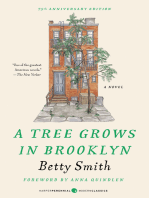0 ratings0% found this document useful (0 votes)
36 viewsSocial Forestry I
Social Forestry I
Uploaded by
Bendo VensISFP Note Forestry (PH)
Copyright:
© All Rights Reserved
Available Formats
Download as PDF or read online from Scribd
Social Forestry I
Social Forestry I
Uploaded by
Bendo Vens0 ratings0% found this document useful (0 votes)
36 views5 pagesISFP Note Forestry (PH)
Copyright
© © All Rights Reserved
Available Formats
PDF or read online from Scribd
Share this document
Did you find this document useful?
Is this content inappropriate?
ISFP Note Forestry (PH)
Copyright:
© All Rights Reserved
Available Formats
Download as PDF or read online from Scribd
Download as pdf
0 ratings0% found this document useful (0 votes)
36 views5 pagesSocial Forestry I
Social Forestry I
Uploaded by
Bendo VensISFP Note Forestry (PH)
Copyright:
© All Rights Reserved
Available Formats
Download as PDF or read online from Scribd
Download as pdf
You are on page 1of 5
Relreshor Course tor Foresirg Gy
SOCIAL FORESTRY
ELSA P. SANTOS and DIXON T GEVASIA
Departmant of Social Forestry and Forest Governance
College of Forestry and Natural Resources
UP Los Bafios
Knowledge and Perceptions on Forestry In the 1950s-1960s
{c. 1950's & 1960's)
a. Forests can provide many and diverse roles in producing raw materials aad
providing environmental services. These roles have to be carefully balanced in.
tnuttiple-purpose forest management systems
b. Forests do not only exert their positive influences locally, but may alco influence
conditions in more distant regions. Thus, forest management should incorporate
regional interests in forest services.
c. Production cycle in forestry normally takes many years and long-term sustained.
forest production.
d. d. Local people's farming or land use practices interfere with the gavernment's
revenue-generaling forest harvesting systems and the ecosystems’ ability fo
regenerate.
¢. These justify the centralization of forest management in the hands of the forestry
service as it was believed that only trained professionals can manage the forests
well.
Social Forestry: The New Paradigm in Forest Conservation and Development
> Why need a new paradigm?
+ Deforestation remained high and believed to be caused fargely by poor peopie
extracting forest resources or converting forestiand for raising subsistence craps.
+ Many countries have become wood importers when they used to be wood exporter
* Recognition of adverse impacts of fuelwood shortages in Africa and Asia to heath)
and nutrition of rural people and the inefficient use of cow dung.
. rome that policies that promote madernization did not solve the poverty
oe ne custodial attempts to police the forestland by professional foresters did 4
work and evidences of effective eal forest management surfaced
: ¥
rosaries |
Address the needs and asiratons ol the underprivileged tural populating
tones faves, subsistovice ferns, wornen: headed houiietiokds. ond
eamenu te:
Ovher terms used as soclal forestry
Agonnsty ~ felers fo a group of land use systems or practizes thal play an
‘moriant rae in social foresty projects; social forestry tofors ko a group af forest
managorent statogies whore (oval participation and equitable distabution of
paMWets are contial objectives.
Command foresty ~ refers to forest management practices ar systems undertaken
dy communis member oF forest-dependent communities,
Soom fpresity~ refers £0 commercial production of single or select tree species oy
farmers on prvalely-contralied lands or leased lands; common in areas where tire
‘'S an existing market for wood or other tree products,
Tee Sming ~ refeis to tree planting of farmers aimed at improving the provision of
metgie Denelits (€.9, fuel, ruts, fodder, construction wood, etc) tothe farm-
pousehold system: tree grower must have sufficient long-term contro over the tand
Pabiely-managed forestry ~ refers to public tree planting on private or comin si
‘ends caried by the government to uplift social conditions.
Pioneering phase (1971-1980) - appeasement
+ Adoption of people-oriented forestry programs (FOM, FAR, and CTF)
Senge were Seen as mere provider of cheap labor in forest conservation projecis
‘Communly forestty was also seen as a counter-insurgency strategy
Forestry sector realized that deforestation was not 8 mere technical but 2 socio.
politcal problem.
‘agration end consovidation phase (1981-1989)-participation and empowerment
} 5 Mrorated
+ insttiston of ISFP and CFP, ISFP consolidated previous people-oriented prog'sin*
be ‘nd provided tenure through stewardship
1+ CFP exerded tne coverage to natal forests allowing upland communities to
5 commencaily ullize forest resources after undergoing preparatory Vainngs
i + Local people became de facto resource managers oF partners in forest develoe
} nd conservation
+ Reatzation’by Hie government that poverty alleviation, social justice, and equity
4 resnutce deinibslion and forest sustaiabitty can be actweved through CFF
JUished following the framework of participatory projec
.oing the Jeaming process approach
+ Contivous application and relinement of participatory appraisal and planing
methcaoiogns and techraques
Expansion ang institutionalization phase
~~. {1990 to present)-promotion of social justice and SO
have productwe and environmental roles
ue be balanced in mull-purpose forest
ge
{regions thus activities in the forest must be
{caret regulated by professionals
| Production eycle in forestry takes many years,
| ts professional intervention is required for
sustained (rest production.
_| way or in comgler
| Fon
| and enveormantal rl:
secuting postive forest infuences is tu
the loca! economy
Production cycle can be long or sha
cn the kind of product and use in
local participation is vital.
Local people's farming or land use practices
inerere with the government's revenue
geverating forest harvesting systems and the
ecosystems regenerative ability
Centraizaton of forest management is necessary
to secure the productive and environmental
funetons ofthe forest
Local people's farming pracioes are ave
integrative, organic, nd sustainable
‘unsustainable farming practices are ¢ res.
alienation brought by GR era
Decentralized, non-hierarchical system is more
appropriate considering the prevalence of ica!
indigenous technical knowledge and diversty of
local conditions.
[amar Tnierest must take precedence over local
‘terest; economic growth that incorporates wood
‘ndustiatzation must be pursued.
| (ny tained professionals can manage the
[orests wel
Creation of official forest reserves under The
| responsibly of professional forest service is
| necessary.
Marginalization of focal wefare is largely
‘responsible for deforestation; local people hardly
benefited from employment provided by weed
industies
Local ITK is time-tested, reliable and culturally.
adapted.
‘Community-based foresl management provdes
direct access to forest resources, income, 2nd
protection responsibilty.
| Forest service considered rural people as a threat
to forestiands.
Social forestry defined
+ That branch of forestry which deals with the understanding of the interactions
between forest ecosystem and human
+ FAO, 1978: any situation which intimately involves local people in a forest activity: a
sel of inferconnected actions and works executed primarily by local community
residents to improve their own welfare.
+ Ageneral term for al foresty-related activities of individuals.or groups withthe aim of
empowering and improving the overall conditions of potential partners in forest
imariagement.
Objectives of Social Forestry
Rural people could be partners as ong a5 er
basic needs, resource access and contl, nd
paricpationin decisions are secured
social system.
+ Provide the means for rural peoplé lo produce or have better access to basic needs
in the form of essential forest and tree products and services.
+ Increase the participation of rural people in the management of forest and tree
resources as a means of increasing their selfreliance.
+ Increase the utilization of human resources for managing degraded and marginal
tands to counter the process of deforestation
+ Contribute to the development of rural people through employment generation,
institution building, and promotion of economic growth.
rd
‘This course maionial is for the exclusive use io the 2014 Relresher Course for Foresiry Gradusies.
eractherised use, reproduction, Serge hs tal ten, kntanal ts Sy on Or
Saar Sor"9, ecoreng, or otar electronic or mecha! methods of ts pbicavan i prahted,
Sy haheahar Gawat by Ferosry Oreduaee | 014
Evolving strategies in Sociat Forestry;
Expansion of community fornstey in other land uses sich a3 Bi desta watershed
aroas sind vreas where IGCs resides
Increasing Support from inter iational furtding agericies.
Other types of tenurial instruments have neen provided.
Vanous forms'of institutional arrangements vate also evolved {participation of the
NGOs, LGUs, academe and {he
Integration of all SF or es ran
at cbFM program. «
Basic neads and poverty flleviation {uit the needs funder -privfeged population |
grouns. © Ms
Participatory ‘develonment 0 falaulale al perlicipation k in development projects to
bririg about emancipation’ and self retiance )”
Sender paniy, securing huinaa rights ~ giving etlention fo gender and cuturat
communities. -
Enviionnental and food sean: av
interspecies equily.
Related concepts to Sociat Forestry
People witin a geographical bounded area invoived in sociainteracton, 0 wits cow og
. ‘OE Peycholopical tes with each other and with the place they five
Fanetions of community
‘. ion-consumption
2 Secalization ~ society ransmis prevalin knowledge, social vales, and behavce
Patterns to ts individual members
3 Social control ~ process trough which a group inuences the behavior of ts
members towards conformity with its norm
4. Mutual support
Stakeholder
ER © individuals who have a stake o vested interes, in determining the success or
falure of an activity. Ex. Local government . wales users group,
‘retg'ous groups, women’s group, private Land owners, upland farrners ets
‘A Process of social change simed not only at raising the material welfare of people but aso
‘maximally developing their human potentials
; Furtarertala of Community Development .
ree st enh i tte
16 @ssental to their ives and development
* Participation, Enightened, responsible, active and sustai ane
|, Sustained involver:
ieleronoege etek acs om pb :
"Re renan,woneceg od Mand benefit shaving
Soci jotce oF equity. cutabig 2cat8 and dsinduion a
k —
ment We ohare pe
You might also like
- The Subtle Art of Not Giving a F*ck: A Counterintuitive Approach to Living a Good LifeFrom EverandThe Subtle Art of Not Giving a F*ck: A Counterintuitive Approach to Living a Good LifeRating: 4 out of 5 stars4/5 (6016)
- The Gifts of Imperfection: Let Go of Who You Think You're Supposed to Be and Embrace Who You AreFrom EverandThe Gifts of Imperfection: Let Go of Who You Think You're Supposed to Be and Embrace Who You AreRating: 4 out of 5 stars4/5 (1113)
- Never Split the Difference: Negotiating As If Your Life Depended On ItFrom EverandNever Split the Difference: Negotiating As If Your Life Depended On ItRating: 4.5 out of 5 stars4.5/5 (909)
- Grit: The Power of Passion and PerseveranceFrom EverandGrit: The Power of Passion and PerseveranceRating: 4 out of 5 stars4/5 (619)
- Hidden Figures: The American Dream and the Untold Story of the Black Women Mathematicians Who Helped Win the Space RaceFrom EverandHidden Figures: The American Dream and the Untold Story of the Black Women Mathematicians Who Helped Win the Space RaceRating: 4 out of 5 stars4/5 (937)
- Shoe Dog: A Memoir by the Creator of NikeFrom EverandShoe Dog: A Memoir by the Creator of NikeRating: 4.5 out of 5 stars4.5/5 (546)
- The Hard Thing About Hard Things: Building a Business When There Are No Easy AnswersFrom EverandThe Hard Thing About Hard Things: Building a Business When There Are No Easy AnswersRating: 4.5 out of 5 stars4.5/5 (358)
- Her Body and Other Parties: StoriesFrom EverandHer Body and Other Parties: StoriesRating: 4 out of 5 stars4/5 (831)
- Elon Musk: Tesla, SpaceX, and the Quest for a Fantastic FutureFrom EverandElon Musk: Tesla, SpaceX, and the Quest for a Fantastic FutureRating: 4.5 out of 5 stars4.5/5 (479)
- The Emperor of All Maladies: A Biography of CancerFrom EverandThe Emperor of All Maladies: A Biography of CancerRating: 4.5 out of 5 stars4.5/5 (275)
- The Little Book of Hygge: Danish Secrets to Happy LivingFrom EverandThe Little Book of Hygge: Danish Secrets to Happy LivingRating: 3.5 out of 5 stars3.5/5 (434)
- The World Is Flat 3.0: A Brief History of the Twenty-first CenturyFrom EverandThe World Is Flat 3.0: A Brief History of the Twenty-first CenturyRating: 3.5 out of 5 stars3.5/5 (2281)
- The Yellow House: A Memoir (2019 National Book Award Winner)From EverandThe Yellow House: A Memoir (2019 National Book Award Winner)Rating: 4 out of 5 stars4/5 (99)
- The Sympathizer: A Novel (Pulitzer Prize for Fiction)From EverandThe Sympathizer: A Novel (Pulitzer Prize for Fiction)Rating: 4.5 out of 5 stars4.5/5 (125)
- Devil in the Grove: Thurgood Marshall, the Groveland Boys, and the Dawn of a New AmericaFrom EverandDevil in the Grove: Thurgood Marshall, the Groveland Boys, and the Dawn of a New AmericaRating: 4.5 out of 5 stars4.5/5 (273)
- A Heartbreaking Work Of Staggering Genius: A Memoir Based on a True StoryFrom EverandA Heartbreaking Work Of Staggering Genius: A Memoir Based on a True StoryRating: 3.5 out of 5 stars3.5/5 (232)
- Team of Rivals: The Political Genius of Abraham LincolnFrom EverandTeam of Rivals: The Political Genius of Abraham LincolnRating: 4.5 out of 5 stars4.5/5 (235)
- On Fire: The (Burning) Case for a Green New DealFrom EverandOn Fire: The (Burning) Case for a Green New DealRating: 4 out of 5 stars4/5 (75)
- The Unwinding: An Inner History of the New AmericaFrom EverandThe Unwinding: An Inner History of the New AmericaRating: 4 out of 5 stars4/5 (45)
- Undag, Chapter1Document6 pagesUndag, Chapter1Bendo VensNo ratings yet
- Undag, Chapter2Document5 pagesUndag, Chapter2Bendo VensNo ratings yet
- Undag, MethodologyDocument4 pagesUndag, MethodologyBendo VensNo ratings yet
- For. Wildlife&Biodiversity Act. 1Document5 pagesFor. Wildlife&Biodiversity Act. 1Bendo VensNo ratings yet
- Monitoring Officer - WRDDocument2 pagesMonitoring Officer - WRDBendo VensNo ratings yet













































